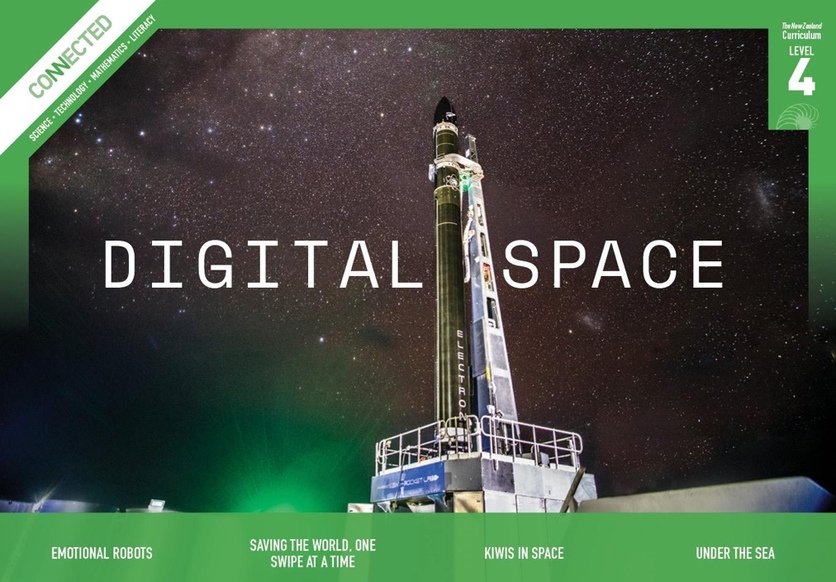This Connected article explores the science and technology behind the amazing achievements of Rocket Lab. From New Zealand’s first launch of a rocket into space in 2009 to January 2018 when New Zealand became one of only 11 countries to have successfully launched a satellite into orbit.
The article is based on an interview with Rocket Lab Avionics Manager Naomi Altman. Delve into the work undertaken on the Electron rocket by her team of more than 20 technicians and engineers. What does it take to get this rocket into orbit?
The key science ideas covered in this article are:
- The mass and velocity of the burning fuel as it escapes from the rocket engine launches a rocket into the air.
- Objects in orbit are called satellites – these can be natural or artificial.
- Satellites are pulled towards Earth by gravity, but they move horizontally fast enough to continually miss Earth, instead of falling around it.
Check your school library for the article from the 2018 level 4 Connected journal ‘Digital Space’ download it as a Google slide presentation from Tāhūrangi or order it from the Ministry of Education.
The teacher support material (TSM) can be downloaded from Tāhūrangi (Word and PDF files available). It has two learning activities that support the exploring the science, technology and mathematics and statistics aspects of the New Zealand Curriculum: Exploring the science and technology and Exploring the mathematics and statistics. An extension idea and resources links are also provided.
Related content
Find out more about Rocket Lab and their Electron rocket.
Explore some of the ideas fundamental to understanding rockets:
Explore some of the ideas fundamental to understanding satellites:
In this video watch teacher Sinead Senek explain how she used Science Learning Hub rocket resources to help her class to refine their enquiries into rockets and forces.
Napier Central School students interviewed Naomi Altman prior to a Rocket Lab launch. The article Connecting with scientists highlights how they honed their interview techniques and etiquette to make the most of their time with Naomi.
The students could investigate other composite materials and other uses of carbon fibre.
Check out our entire range of Connected articles here. We’ve curated them by topic and concepts.
Activity ideas
In the activity Investigating rocket motion students investigate the motion of a rocket using a spreadsheet with graphs of motion included. They adjust variables and investigate how height and speed are affected.
Explore the ideas of force and thrust further in the Rocket launch challenge activity, this is based on the Electron rocket launch. Your challenge is to make the rocket go as high as possible and launch a payload 400 km above the ground.
The two activities effervescent canister rockets and balloon car challenge give students the chance to develop their science understanding as they solve their own rocket propulsion challenges. Put that knowledge to the test by building and launching water bottle rockets.
Use the activity Scale model for satellite orbits to explore satellite altitudes and satellite motion as students use a scale model of the Earth and identify altitudes of various satellites.
Related collection
3...2...1...Lift off! is a collection of resources aimed for NZC levels 1-4, it also can be utilised as a good guide for scaffolding concepts about forces and rockets at higher levels.
Log in to make this collection part of your private collection, just click on the copy icon. You can then add additional content and notes and make other changes.
Useful links
Find out more about Rocket Lab on their website.
For help with the mathematical ideas, search the Tāhūrangi website for measurement and see the resources on rocket balloons and measuring angles.
The Connected journals can be ordered from the Down the Back of the Chair website. Access to these resources is restricted to Ministry-approved education providers. To find out if you are eligible for a login or if you have forgotten your login details, contact their customer services team on 0800 660 662 or email orders@thechair.education.govt.nz.
Acknowledgement
The Connected series is published annually by the Ministry of Education, New Zealand.



